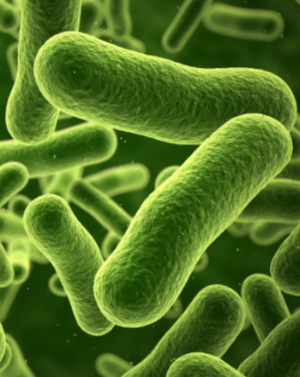Tomasiella immunophila: Difference between revisions
| Line 37: | Line 37: | ||
Tomasiella immunophila is a gram-negative, rod-shaped, auxotrophic bacterium. When the species is cultured on a plate its physical characteristics appear to be smooth, moist, and translucent. The species was recently isolated from the intestinal tract of laboratory mice being investigated for microbiome symbionts at the Cleveland Clinic. (Quiche Lu et al, 2024) The mammalian microbiome maintains an internal temperature of around 37°C (98.6°F). This would classify T. immunophila as a mesophilic microbe. | Tomasiella immunophila is a gram-negative, rod-shaped, auxotrophic bacterium. When the species is cultured on a plate its physical characteristics appear to be smooth, moist, and translucent. The species was recently isolated from the intestinal tract of laboratory mice being investigated for microbiome symbionts at the Cleveland Clinic. (Quiche Lu et al, 2024) The mammalian microbiome maintains an internal temperature of around 37°C (98.6°F). This would classify T. immunophila as a mesophilic microbe. | ||
[[Image:T._Immunophila.png|thumb|300px|right|Tomasiella immunophila en masse Image credit: www.biopatrika.com]] | |||
==Genome Structure== | ==Genome Structure== | ||
Revision as of 22:22, 25 November 2024
Tomasiella immunophila
Legend. Image credit: Name or Publication.]]
Classification
Domain Bacteria;
Phylum Pseudomonadota;
Class Gammaproteobacteria;
Order Enterobacterales;
Family Enterobacteriaceae
Species
|
NCBI: [1] |
There is no NCBI page currently listed for the species Tomasiella Immunophila
Description and Significance
Describe the appearance, habitat, etc. of the organism, and why you think it is important.
Tomasiella immunophila is a gram-negative, rod-shaped, auxotrophic bacterium. When the species is cultured on a plate its physical characteristics appear to be smooth, moist, and translucent. The species was recently isolated from the intestinal tract of laboratory mice being investigated for microbiome symbionts at the Cleveland Clinic. (Quiche Lu et al, 2024) The mammalian microbiome maintains an internal temperature of around 37°C (98.6°F). This would classify T. immunophila as a mesophilic microbe.
Genome Structure
Describe the size and content of the genome. How many chromosomes? Circular or linear? Other interesting features? What is known about its sequence?
Cell Structure, Metabolism and Life Cycle
Interesting features of cell structure; how it gains energy; what important molecules it produces.
Ecology and Pathogenesis
Habitat; symbiosis; biogeochemical significance; contributions to environment.
If relevant, how does this organism cause disease? Human, animal, plant hosts? Virulence factors, as well as patient symptoms.
References
Lu Q, Hitch TCA, Zhou JY, Dwidar M, Sangwan N, Lawrence D, Nolan LS, Espenschied ST, Newhall KP, Han Y, Karell PE, Salazar V, Baldridge MT, Clavel T, Stappenbeck TS. A host-adapted auxotrophic gut symbiont induces mucosal immunodeficiency. Science. 2024 Sep 27;385(6716):eadk2536. doi: 10.1126/science.adk2536. Epub 2024 Sep 27. PMID: 39325906.
Author
Page authored by _____, _____, _____, & _____, students of Prof. Bradley Tolar at UNC Wilmington.

